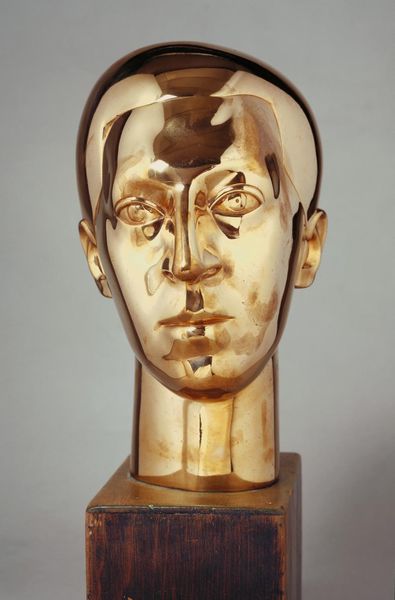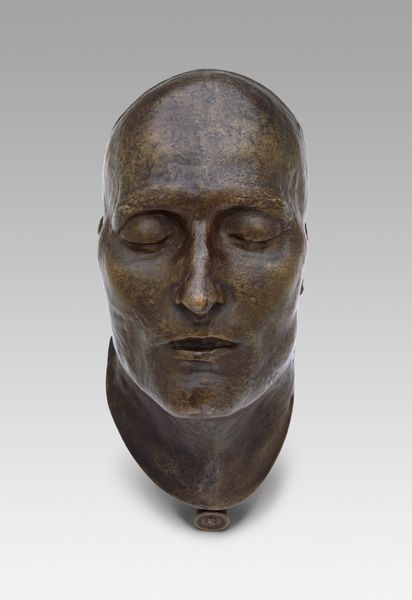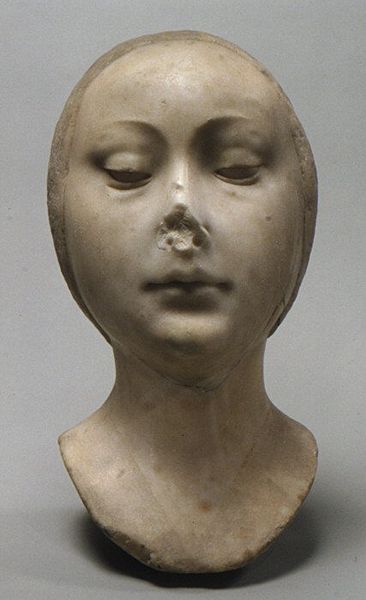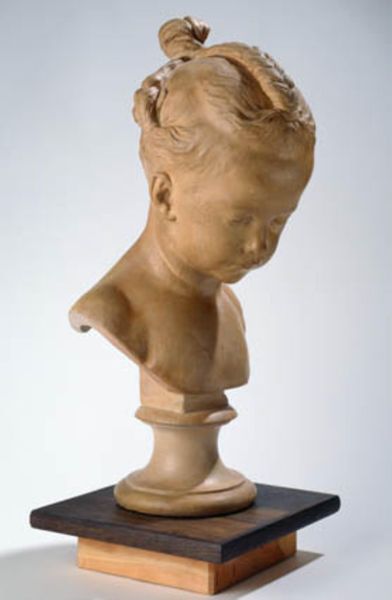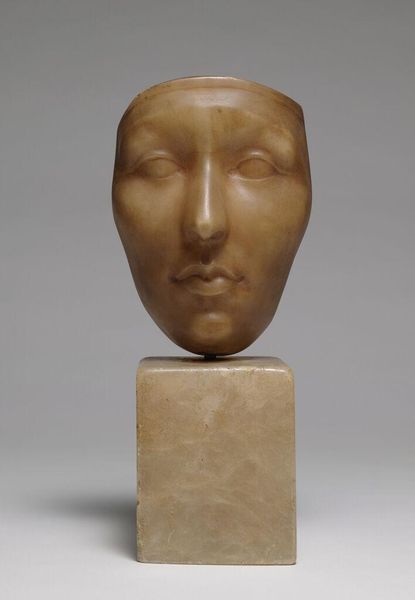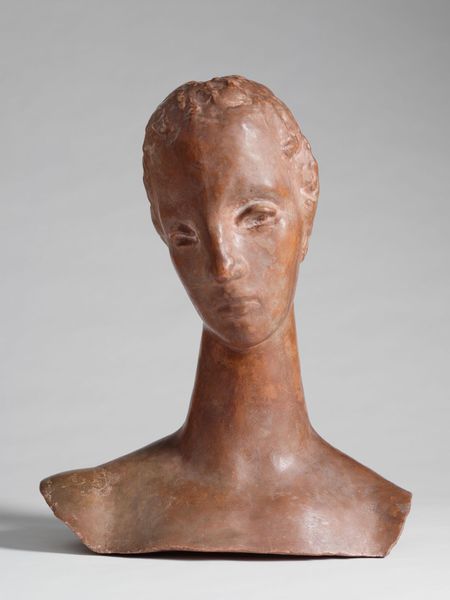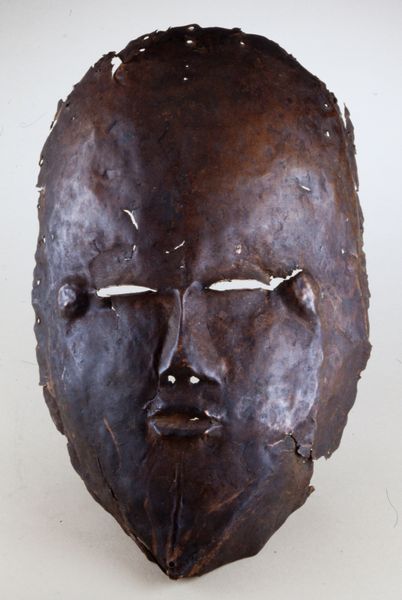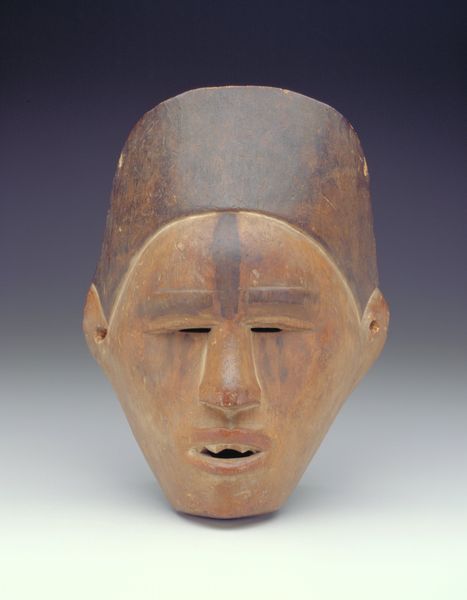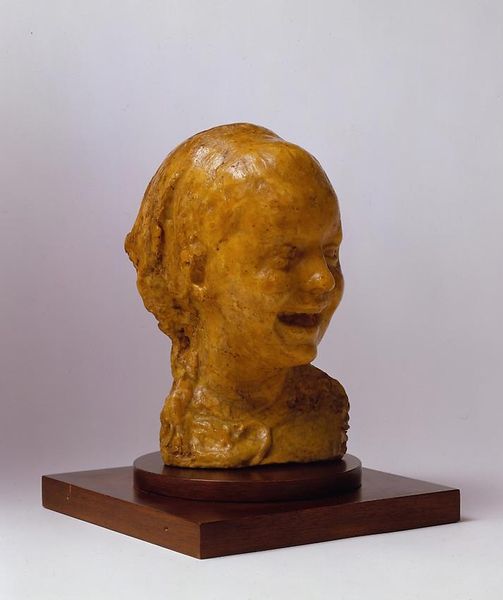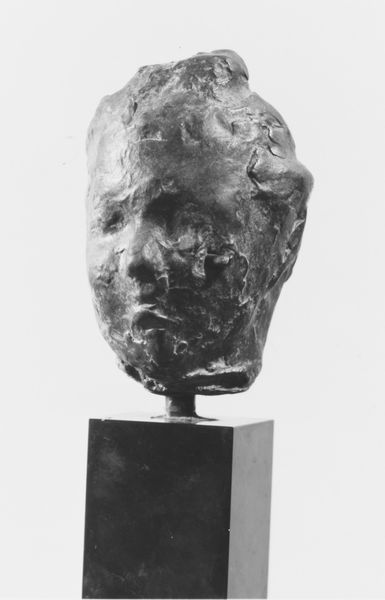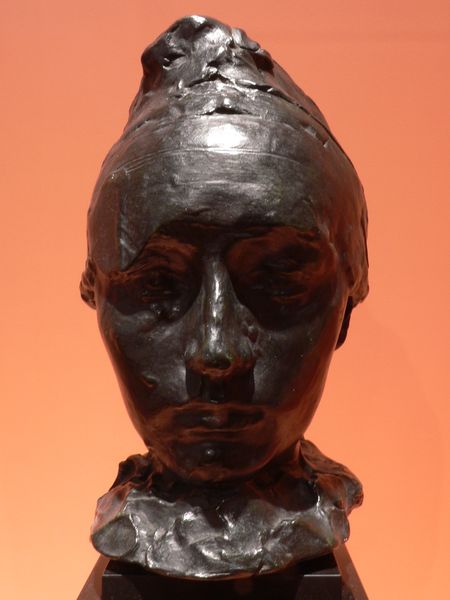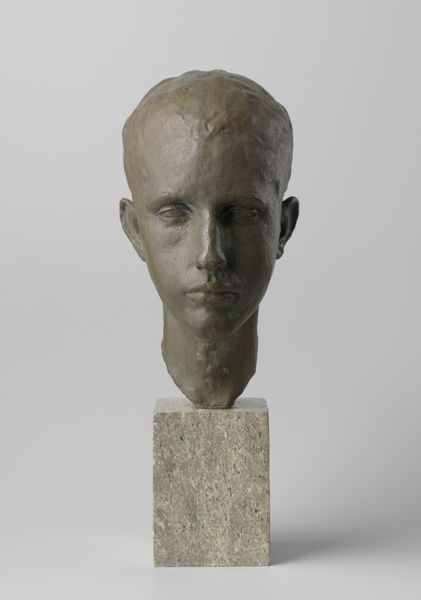
#
head
#
face
#
portrait image
#
sculpture
#
sculptural image
#
male portrait
#
portrait reference
#
portrait head and shoulder
#
mid-section and head portrait
#
animal drawing portrait
#
forehead
#
statue
#
digital portrait
Copyright: Giacomo Manzu,Fair Use
Curator: This is Giacomo Manzu’s “Head,” created in 1939. Editor: It’s arresting. Such smooth skin, but there’s a sadness in the downturned mouth and shadowed eyes. Curator: Indeed. Manzu sculpted this head during a tumultuous period in European history, right on the cusp of World War II. It reflects, perhaps unconsciously, the collective anxiety of that era. He was deeply affected by the war, using his art as a form of protest and a meditation on human suffering. Editor: I am wondering if the artist consciously thought of creating a piece that expressed resistance. Maybe his act of choosing to depict the subject, to make him matter as a focus, was political enough, considering fascism's dehumanization strategies and disregard for certain groups. Curator: That's astute. Consider also Manzu’s own position under the fascist regime in Italy. The social and political atmosphere of the time heavily influenced artists. There were limitations, censorship, and expectations for art to serve propaganda purposes. Editor: That’s it. Thinking through that lens, even a portrait of a male head could serve as an understated yet powerful reminder of individuality and humanity in times when the regime sought to suppress those values. Curator: Absolutely. Moreover, let’s look beyond the overt political symbolism and think of what it means to engage with portraiture as resistance. The way we depict faces, which faces we choose to monumentalize, these acts inevitably involve power relations, visibility, and the very politics of representation. Editor: So true. I feel my perspective has deepened. It reminds us that what appears like a single figure could mirror deeper themes when read through its sociopolitical contexts. Curator: Ultimately, appreciating a work such as Manzu’s “Head” means delving into a broader narrative and connecting the dots across art history and social context. Editor: It shows how personal contemplation and the depiction of emotion during historical events can become powerful artistic messages of the time.
Comments
No comments
Be the first to comment and join the conversation on the ultimate creative platform.
